Shiwei Tong
Enhancing Knowledge Graph Completion with Entity Neighborhood and Relation Context
Mar 29, 2025Abstract:Knowledge Graph Completion (KGC) aims to infer missing information in Knowledge Graphs (KGs) to address their inherent incompleteness. Traditional structure-based KGC methods, while effective, face significant computational demands and scalability challenges due to the need for dense embedding learning and scoring all entities in the KG for each prediction. Recent text-based approaches using language models like T5 and BERT have mitigated these issues by converting KG triples into text for reasoning. However, they often fail to fully utilize contextual information, focusing mainly on the neighborhood of the entity and neglecting the context of the relation. To address this issue, we propose KGC-ERC, a framework that integrates both types of context to enrich the input of generative language models and enhance their reasoning capabilities. Additionally, we introduce a sampling strategy to effectively select relevant context within input token constraints, which optimizes the utilization of contextual information and potentially improves model performance. Experiments on the Wikidata5M, Wiki27K, and FB15K-237-N datasets show that KGC-ERC outperforms or matches state-of-the-art baselines in predictive performance and scalability.
EduNLP: Towards a Unified and Modularized Library for Educational Resources
Jun 04, 2024
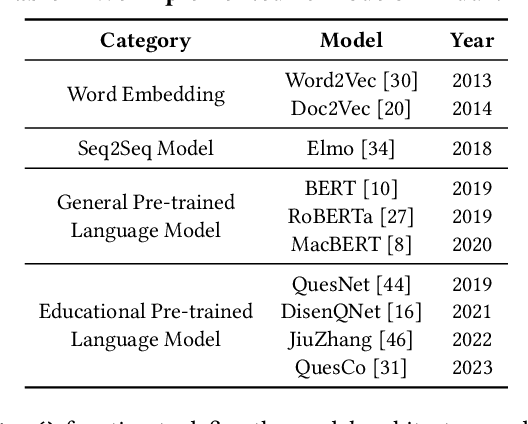
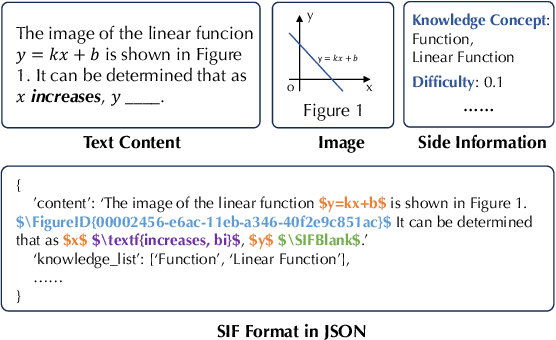
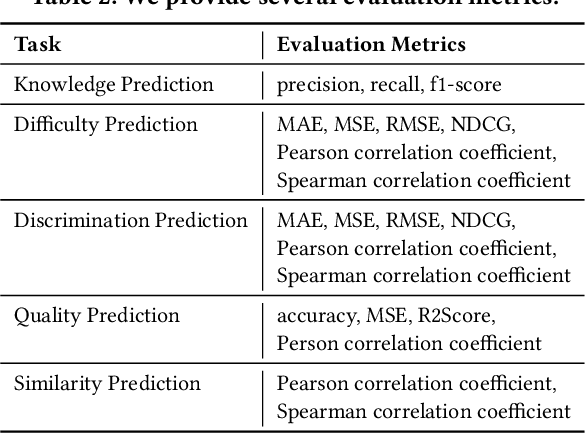
Abstract:Educational resource understanding is vital to online learning platforms, which have demonstrated growing applications recently. However, researchers and developers always struggle with using existing general natural language toolkits or domain-specific models. The issue raises a need to develop an effective and easy-to-use one that benefits AI education-related research and applications. To bridge this gap, we present a unified, modularized, and extensive library, EduNLP, focusing on educational resource understanding. In the library, we decouple the whole workflow to four key modules with consistent interfaces including data configuration, processing, model implementation, and model evaluation. We also provide a configurable pipeline to unify the data usage and model usage in standard ways, where users can customize their own needs. For the current version, we primarily provide 10 typical models from four categories, and 5 common downstream-evaluation tasks in the education domain on 8 subjects for users' usage. The project is released at: https://github.com/bigdata-ustc/EduNLP.
Evaluation of Retrieval-Augmented Generation: A Survey
May 13, 2024Abstract:Retrieval-Augmented Generation (RAG) has emerged as a pivotal innovation in natural language processing, enhancing generative models by incorporating external information retrieval. Evaluating RAG systems, however, poses distinct challenges due to their hybrid structure and reliance on dynamic knowledge sources. We consequently enhanced an extensive survey and proposed an analysis framework for benchmarks of RAG systems, RAGR (Retrieval, Generation, Additional Requirement), designed to systematically analyze RAG benchmarks by focusing on measurable outputs and established truths. Specifically, we scrutinize and contrast multiple quantifiable metrics of the Retrieval and Generation component, such as relevance, accuracy, and faithfulness, of the internal links within the current RAG evaluation methods, covering the possible output and ground truth pairs. We also analyze the integration of additional requirements of different works, discuss the limitations of current benchmarks, and propose potential directions for further research to address these shortcomings and advance the field of RAG evaluation. In conclusion, this paper collates the challenges associated with RAG evaluation. It presents a thorough analysis and examination of existing methodologies for RAG benchmark design based on the proposed RGAR framework.
Towards a Holistic Understanding of Mathematical Questions with Contrastive Pre-training
Jan 18, 2023Abstract:Understanding mathematical questions effectively is a crucial task, which can benefit many applications, such as difficulty estimation. Researchers have drawn much attention to designing pre-training models for question representations due to the scarcity of human annotations (e.g., labeling difficulty). However, unlike general free-format texts (e.g., user comments), mathematical questions are generally designed with explicit purposes and mathematical logic, and usually consist of more complex content, such as formulas, and related mathematical knowledge (e.g., Function). Therefore, the problem of holistically representing mathematical questions remains underexplored. To this end, in this paper, we propose a novel contrastive pre-training approach for mathematical question representations, namely QuesCo, which attempts to bring questions with more similar purposes closer. Specifically, we first design two-level question augmentations, including content-level and structure-level, which generate literally diverse question pairs with similar purposes. Then, to fully exploit hierarchical information of knowledge concepts, we propose a knowledge hierarchy-aware rank strategy (KHAR), which ranks the similarities between questions in a fine-grained manner. Next, we adopt a ranking contrastive learning task to optimize our model based on the augmented and ranked questions. We conduct extensive experiments on two real-world mathematical datasets. The experimental results demonstrate the effectiveness of our model.
Chinese Embedding via Stroke and Glyph Information: A Dual-channel View
Jun 03, 2019


Abstract:Recent studies have consistently given positive hints that morphology is helpful in enriching word embeddings. In this paper, we argue that Chinese word embeddings can be substantially enriched by the morphological information hidden in characters which is reflected not only in strokes order sequentially, but also in character glyphs spatially. Then, we propose a novel Dual-channel Word Embedding (DWE) model to realize the joint learning of sequential and spatial information of characters. Through the evaluation on both word similarity and word analogy tasks, our model shows its rationality and superiority in modelling the morphology of Chinese.
Exploiting Cognitive Structure for Adaptive Learning
May 23, 2019

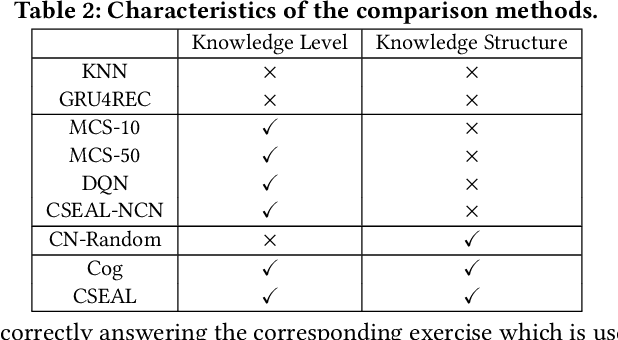
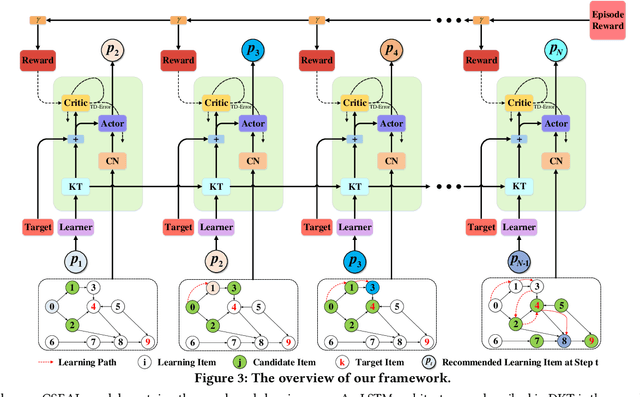
Abstract:Adaptive learning, also known as adaptive teaching, relies on learning path recommendation, which sequentially recommends personalized learning items (e.g., lectures, exercises) to satisfy the unique needs of each learner. Although it is well known that modeling the cognitive structure including knowledge level of learners and knowledge structure (e.g., the prerequisite relations) of learning items is important for learning path recommendation, existing methods for adaptive learning often separately focus on either knowledge levels of learners or knowledge structure of learning items. To fully exploit the multifaceted cognitive structure for learning path recommendation, we propose a Cognitive Structure Enhanced framework for Adaptive Learning, named CSEAL. By viewing path recommendation as a Markov Decision Process and applying an actor-critic algorithm, CSEAL can sequentially identify the right learning items to different learners. Specifically, we first utilize a recurrent neural network to trace the evolving knowledge levels of learners at each learning step. Then, we design a navigation algorithm on the knowledge structure to ensure the logicality of learning paths, which reduces the search space in the decision process. Finally, the actor-critic algorithm is used to determine what to learn next and whose parameters are dynamically updated along the learning path. Extensive experiments on real-world data demonstrate the effectiveness and robustness of CSEAL.
 Add to Chrome
Add to Chrome Add to Firefox
Add to Firefox Add to Edge
Add to Edge